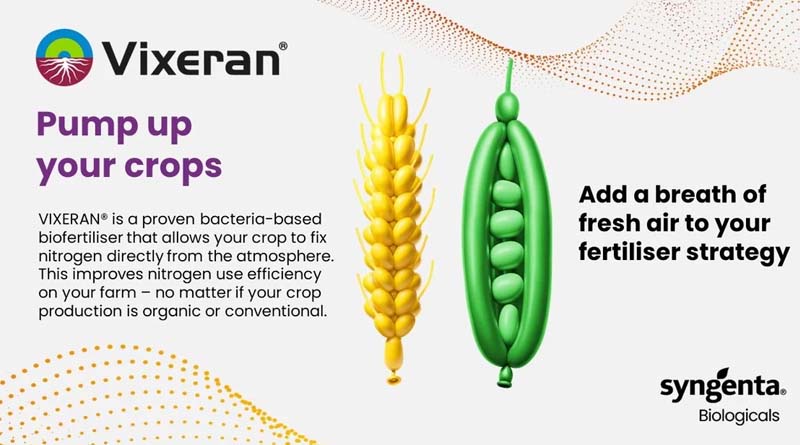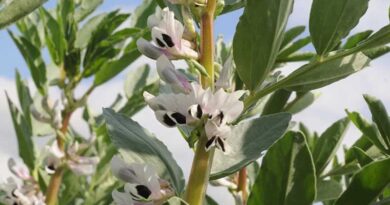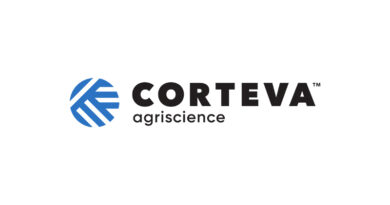Vixeran to improve in-field nutrient use efficiency this spring
22 February 2024, UK: VIXERAN® is an exciting new biofertiliser from Syngenta based on a unique endophytic bacteria that is highly efficient in fixing free atmospheric nitrogen into a form readily useable by crops. Foliar applied to the growing crop, it is easy to use in agronomy programmes and brings significant benefits for yield and quality in a wide range of crops.
Earlier this month Syngenta hosted a webinar to explain the scientific development of Vixeran, how it can help growers and agronomists meet changing demands for nitrogen fertilisers and how it can be best utilised in practice.
Many farmers are actively seeking to reduce nitrogen use and ensuring inputs better match crop offtake, to avoid both economic and environmental losses, according to Syngenta Biologicals Market Development Manager, Neil Procter.
Speaking at a Vixeran Technical Webinar this month (Feb 2024), he pointed out drivers for change include societal and legislative demands, the cost of fertilisers, climate change requiring reduced energy use and improved soil microbial conditions with regenerative farming practices, including min till and cover crops.
“It’s essential to still achieve economic yield, but growers need to look at ways to enhance N utilisation – be that legumes, soil health or using the benefits of Vixeran to supply nitrogen naturally and sustainably.
“Nitrogen fixing Vixeran is a new opportunity for farmers looking to optimise crop nutrient balance and efficiency, reducing the reliance on high levels of conventional fertilisers to achieve profitable yields, whilst supporting soil health.”
Neil pointed out that conventional N consumes huge amount of energy in its production, but also that the plant then expends energy to convert nitrates taken up through the root into ammonium – and then into amino acids and proteins in order to build biomass; energy that could be better utilised in driving growth if the N is supplied in a more readily useable form.
See how Vixeran offers a sustainable source of N for crops:
For example, since cereals use 70% of their requirement for N in the early stages of development, the continuous supply of N by Vixeran within the plant can help to mitigate the physical constraints of conventional fertiliser application timing and weather conditions for its utilisation – be that too dry for uptake or too wet and leached away.
“There is no shortage of nitrogen, it makes up nearly 80% of the atmosphere – equating to an estimated 75 tonnes of N above every hectare of crop,” he said.
“However, the challenge is that plants are unable to use that nitrogen without the help of specialist microbes. The development of Vixeran gives the opportunity to make better use of the resource, for more efficient and sustainable crop production.”
The science behind Vixeran discovery
Reporting the development of Vixeran bacterial strain, Mónica Perdices Hoyo, Technical Director at Ceres Biotics, highlighted that while many bacteria do have the capability to fix atmospheric N – including healthy soil microbial activity – there is huge variability in the efficiency with which they can achieve it.
The potential of Azotobacter salinestris species has long being recognised, but it is only through huge investment in R&D time and technology that the specific CECT 9690 strain in Syngenta’s Vixeran has been identified and optimised.
“What sets the Vixeran bacterial strain apart – and makes it so applicable for field applications – is the speed at which it gets to work and its resilience to climatic conditions, which means it will provide reliable results more consistently, in a wider range of crops,” she said.
The Vixeran bacterial strain is unique in its high nitrogen fixation activity and its triple mode of action – working as a foliar endophyte, root endophyte and in the soil rhizosphere.
“Now the specific strain has been isolated and exhaustively tested, we can multiply billions of the bacterial CECT 9690 clones that will all perform in precisely the same way and manufacture Vixeran.”
The Vixeran bacterial CECT 9690 strain fixes atmospheric nitrogen directly into ammonium, which is immediately available and much more readily useable by the plant. Furthermore, because it is also an endophytic strain– performing inside the plant – the N is supplied exactly where required and not subject to any losses, she pointed out.
Endophytic bacteria are important, as they have a positive beneficial relationship with the host plants; the plants provide naturally sugars to attract and feed endophytic bacteria, and in return the endophytes that live at least part of their cycle within the plant, give back nitrogen.
What is Vixeran? – the science explained:
Mónica also pointed out that the specific strain CECT 9690 in Vixeran is classified by the European Food Safety Authority (EFSA) as the lowest microbiology risk Class 1 for biosafety.
She demonstrated that in-vitro testing of the Vixeran strain proved it was far more efficient at nitrogen fixation than other isolates tested. It was also shown to facilitate the mobilisation of other nutrients important to plant growth, including potassium and micronutrients, along with stimulating plant growth by the local production of phytohormones, including auxins, gibberellins.
“No less important“ It proved to be highly tolerant for temperature and water stress tolerance, as well as pH, hard water, salinity and chlorine. That makes it highly suitable for wide range of crops and conditions in the field,” Mónica advised.
Over 220 arable crop trials undertaken in wheat, barley, maize, oilseed rape and potatoes, had proven yield benefits averaging over 10%, with additional vegetable crop trials showing both yield and produce quality benefits, she added.
Getting the best from Vixeran
For Syngenta UK Technical Manager and biologicals specialist, Andy Cunningham, some of the most important scientific research work has proven how Vixeran application led to increased chlorophyll levels in the leaf, which in turn created a greater root biomass that could deliver yield.
Using nitrogen that was isotopically labelled, it was shown that the overall levels of N in the plant were greater, yet the amount that had been taken up as soil N was less – thanks to the contribution of Vixeran bacteria compensating for conventional N.
He recommends that to get the optimum performance with Vixeran crops should be actively growing at the time of application, ideally with temperatures reaching 10-12⁰C on the day of treatment to ensure rapid colonisation of the bacteria. Try and avoid prolonged periods of temperatures below 5⁰C for five days post application to ensure the activity of the Vixeran bacterial strain, he suggests.
“We have seen that if soil temperatures do fall after application, the level of nitrogen fixation may drop off. But crucially the bacteria survive and, when temperatures rise, the nutrient production resumes at the previous levels. That’s a great testament to the resilience of the product,” he added.
Work had also indicated that during periods of intense UV sunlight, it is better to apply Vixeran in the morning or late afternoon, during optimal periods of stomatal opening to get product into the plants.
Andy suggested most growers and agronomists are likely to utilise Vixeran alongside existing nutrition inputs and to benefit from an uplift in yield from its use. “However, it is acknowledged that there is potential in a nitrogen reduction regime to compensate with Vixeran, typically up to 30 kgN/ha and still retain the same yields as a full fertiliser programme – although trials across the UK and Europe have shown that Vixeran could compensate more.”.”
Andy’s recommendations for use in cereals would be a single application of 50g/ha between GS 21-31; the beginning of tillering through to stem elongation – which would typically coincide with T0 fungicide and early PGR treatments. Trials have shown that for simplicity of application, Vixeran is compatible with most crop protection products and liquid fertilisers.
He advocated that initial spring conventional N fertiliser rates should not be reduced, but making any adjustments in subsequent applications.
Results of winter wheat trials in Lincolnshire last season showed an average 0.3 t/ha yield uplift with Vixeran. Used in addition to the crop’s calculated optimum N rate of 220 kg/ha, the treatment improved yield by 0.49 t/ha. And when used to compensate for a 50 kg/ha reduction in conventional nitrogen, produced an extra 0.64 t/ha to bring yield back up to similar to the standard.
“Looking at a nitrogen dose response for the trial showed the Vixeran treatment consistently enhanced the conventional N, and, for this trial, it compensated for 40 kg N/ha of bagged N,” he reported.
Similar results had been seen on winter barley in Montrose, Scotland, with higher yields of the Vixeran treated crop more than compensating for a 30 kg N/ha reduction in fertiliser use.
“Multiple trials across Europe have confirmed the trend for Vixeran to offer consistent compensation capability to reduce nitrogen by at least 30 kgN/ha and still retain yield output..
“If nitrogen is reduced further, the drop in yield may be too big to be compensated for, however growers will need to calculate where they need to be for their own economic thresholds.”
Where nitrogen has not been reduced, 75% of Syngenta trials showed a positive improvement in yield from Vixeran treatment, Andy calculated that would equate to an average £36 per hectare extra from the application.
He also highlighted that Vixeran would especially improve yield benefits on inherently low fertility light or shallow soils and in second cereals in the rotation. It also gives greater flexibility and cover delays in application of conventional N, or where weather conditions limit the availability of N for the crop.
“For growers in areas where conventional nitrogen is being severely impacted by regulation it offers a hugely beneficial source of nutrient, in a form that will be fully utilised by the plant and with no risk of additional leaching or losses,” he advocated.
Its use is recommended on all feed wheat and feed barley, with more work ongoing to fully assess implications for malting barley in managing grain N levels. With milling wheat it is not advised to reduce existing nitrogen levels, but the crop can still benefit from the complementary yield uplift with treatment, he suggested.
In addition to cereals, Syngenta has trialled Vixeran use to enhance yields on a range of other crops, including pulses, maize, sugar beet, potatoes, field vegetables and grassland.
“Pulses are interesting, since they do have the inherent legume nitrogen fixation capability. However the plant physiology means that while its nodules develop on roots and provide a source of nutrition early in the crop’s development, when plants need N to fill seed the root nodules are effectively exhausted.
“Vixeran can have a major contribution to supplement the nitrogen need at that time, and reduce the burden on green leaf area. That prolongs the life of the leaf, thereby enabling greater photosynthesis and in turn increase yield.”
A series of trials across the UK last year in winter and spring beans gave an average yield increase of more than 0.5 t/ha (12.7%), from a single application at first flower.
Further reinforcing the safety of Vixeran, Andy highlighted that in Europe the French regulatory authority had removed the warning ‘do not apply to edible parts’ that is a standard precautionary statement for other micro-organism based products.
“The ease of use and convenience of Vixeran means it can be readily incorporated into most spring agronomy regimes. There are great benefits in delivering more sustainable utilisation of nitrogen across a range of crops.
“It could also be especially useful this season, to help crops that were slow to establish in the autumn, or where soil conditions have compromised root structures.”
Also Read: Banana exports from India to touch US$ 1 Billion: APEDA
(For Latest Agriculture News & Updates, follow Krishak Jagat on Google News)















